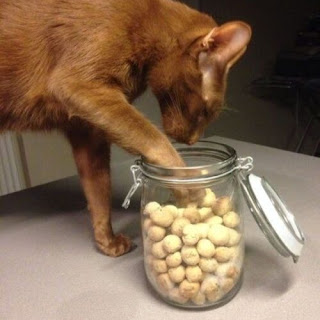1. The Importance of Cat Treats:
Cat treats serve various purposes and benefits for both cats and their owners. They are not only a delicious indulgence but also have the following advantages:
a. Rewards: Treats can be used to reinforce positive behavior during training sessions, making it an effective tool for behavior modification.
b. Bonding: Sharing treats helps strengthen the bond between you and your cat, enhancing the trust and companionship you share.
c. Dental Health: Certain treats are designed to promote dental hygiene, reducing plaque and tartar buildup.
d. Nutritional Boost: Some treats are formulated to supplement a cat's diet with additional nutrients, vitamins, or specific health benefits.
2. Types of Cat Treats:
There is a wide variety of cat treats available, each offering a unique taste and purpose. Let's explore the most common types:
a. Crunchy Treats: These treats have a firm texture, promoting dental health by assisting in teeth cleaning and strengthening jaw muscles.
b. Soft Treats: Soft and chewy, these treats are easy to eat and ideal for older cats or those with dental issues.
c. Freeze-Dried Treats: These treats are made by removing moisture from raw ingredients, preserving the nutrients while offering a crunchy texture.
d. Dental Treats: Specifically designed to promote dental health, these treats often have a rough texture to help scrape away plaque and tartar.
e. Natural Treats: Made from wholesome ingredients without any artificial additives, natural treats offer a healthier alternative.
f. Functional Treats: These treats are formulated to address specific health concerns, such as hairball control or urinary tract health.
3. Choosing Healthy Cat Treats:
To ensure you are providing the best treats for your cat, consider the following factors when making a selection:
a. High-Quality Ingredients: Look for treats with real meat as the primary ingredient, avoiding artificial flavors, colors, and preservatives.
b. Limited Fillers: Avoid treats that contain excessive grains or fillers, as they offer little nutritional value.
c. Calorie Content: Treats should complement your cat's diet without exceeding their daily calorie intake, so opt for low-calorie options.
d. Allergies and Sensitivities: Be mindful of any food allergies or sensitivities your cat may have, and choose treats that are suitable for them.
e. Consult with a Veterinarian: If your cat has specific dietary requirements or health concerns, consult your veterinarian for tailored treat recommendations.
4. Homemade Cat Treats:
For those who prefer a hands-on approach, making homemade cat treats can be a rewarding experience. Here's a simple recipe to get you started:
Recipe: Salmon and Catnip TreatsIngredients:
- 1 cup canned salmon (bones and skin removed)
- 1 egg, beaten
- 2 cups whole wheat flour
- 1/2 cup water
- 1/4 cup dried catnip (optional)
Instructions:
1. Preheat the oven to 350°F (175°C) and line a baking sheet with parchment paper.
2. In a bowl, mix the salmon, egg, flour, water, and catnip until well combined.
3. Roll the dough into small, bite-sized balls or shape them as desired.
4. Place the treats on the prepared baking sheet and bake for 15-20 minutes until golden brown.
5. Allow the treats to cool completely before serving to your feline companion.
Remember to store homemade treats in an airtight container in the refrigerator to maintain freshness.
5. Treats: Moderation is Key:
While treats can be a wonderful addition to your cat's routine, it's important to remember that moderation is crucial. Overindulgence in treats can lead to weight gain, digestive issues, and an unbalanced diet. Follow these guidelines:a. Portion Control: Limit the number of treats given per day, accounting for their calorie content and adjusting it based on your cat's overall diet.
b. Balanced Diet: Treats should not exceed 10% of your cat's daily calorie intake. Ensure their regular meals provide the necessary nutrients.
c. Weight Management: If your cat needs to lose weight, opt for low-calorie treats or consult your veterinarian for guidance.
Cat treats can be a delightful and beneficial way to show your feline friend how much you care. By choosing the right treats, considering their nutritional value, and maintaining moderation, you can provide your cat with delicious rewards while ensuring their overall well-being. Remember, treats are just a small part of a balanced diet, so make them a special addition to your cat's daily routine. So go ahead, spoil your furry friend with some tasty treats, and enjoy the joy and happiness it brings to both of you!





Comments
Post a Comment